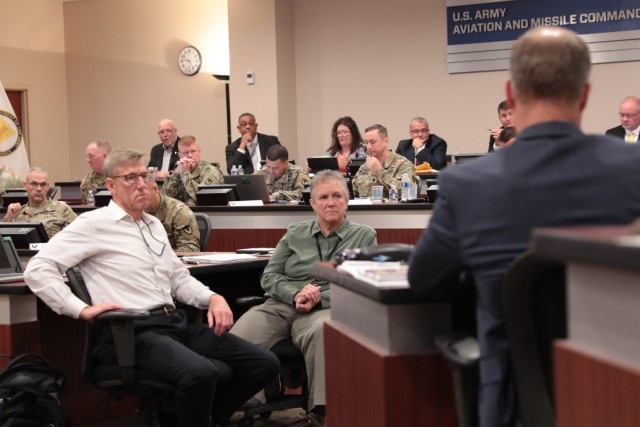
REDSTONE ARSENAL, Ala. — Leaders from across the Army Sustainment Enterprise are making decisions to ensure the organic industrial base, or OIB, is both ready to respond today and in the future whenever the nation calls upon it.
Army Materiel Command leadership recently hosted two events to synchronize and focus efforts across the OIB as the 23 depots, arsenals and ammunition plants begin executing the OIB’s most comprehensive modernization in history.
“Our job is to make sure that we are executing accordingly and doing all the things we need to do,” said Marion Whicker, AMC’s executive deputy to the commanding general. “It’s all about being ready and chance favors the prepared.”
Whicker set the stage at the OIB Commander’s Summit, August 22-23, which offered an opportunity for commanders across the OIB to share information and collaborate with AMC leaders about current modernization efforts, including infrastructure and facility investments, data visualization systems and tools, environmental considerations and OIB metrics.

For more than half the commanders attending this was their first summit and their first time commanding an OIB site, which Whicker noted is different from any other commanding position within the Army. She highlighted that real impact an OIB commander can have is creating enduring processes.
“The biggest thing you can focus on is vision, climate and culture, that is what you will leave behind as you go onto your next assignment,” she said. “It’s those enduring processes that you can put in place that will continue to drive these organizations through modernization.”
In October, at the start of fiscal year 24, the OIB will officially kick off its 15-year modernization plan, which will modernize facilities, processes and people to bring the OIB into the 21st century, infuse industry best practices and refine human capital management structures to maximize the skills and capabilities of the workforce. Whicker said because of the OIB’s extensive support to operations in Eastern Europe, the Army has already received additional funding increasing the MIP’s original total from $16 billion to $18 billion and starting some modernization projects before the original start date.
“The Army had a plan, and we were able to demonstrate that we were shovel ready, so when the DoD accelerated modernization efforts the Army’s OIB was ready,” she said.

To do this, Rich Martin, AMC’s director supply chain management, emphasized the commanders needed to learn the data analytic tools available to them to understand their installation’s important metrics including capacity, performance to promise and carry over.
“Modernization is not just a series of projects, this is a comprehensive effort to take today’s OIB into something it isn’t,” said Martin, who previously served as AMC’s director of the OIB Modernization Task Force. “This is a significant investment plan, and you need to understand the criticality of these updates. You need to understand what purpose or capability you are bringing to generate a capacity.”
Just a week later, AMC hosted a second event, the OIB Future State Symposium, which is the first of a series of meetings to bring together AMC headquarters elements to ensure OIB modernization efforts are integrated across staff sections. Stephanie Hoaglin, the Modernization Task Force acting director, set the stage with the task force’s three focus areas supporting signature modernization efforts, support to enduring systems and divesture.
“These two days are all about alignment,” said Ron Wilson, AMC OIB Modernization Task Force, about the two objectives. “One is two align headquarters initiatives to future state goals for the OIB, and number two then push those initiatives into the 15-year modernization plan.”
The OIB Future State Symposium will expand over time to include AMC’s life cycle management commands, OIB commanders and ultimate the Program Executive Offices and the office of the Assistant Secretary of the Army (Acquisition, Logistics and Technology).
By Megan Gully

